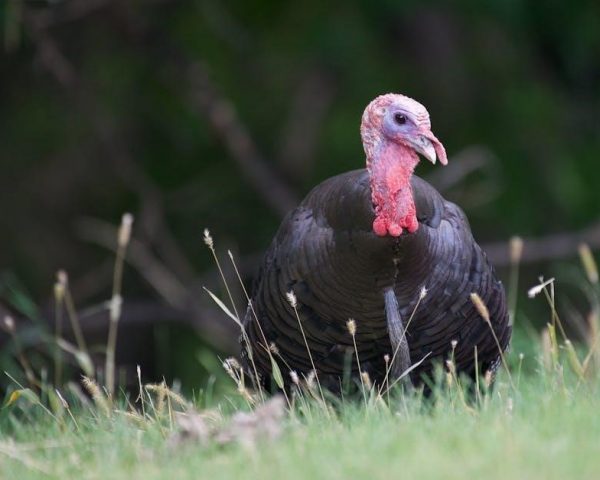WoW Classic Leatherworking Guide
This guide will provide a comprehensive overview of Leatherworking in WoW Classic, covering everything from the basics to advanced techniques․ It will help players understand how to level the profession efficiently, find trainers, and choose specializations․ You will create powerful gear!
Leatherworking is a crucial crafting profession in WoW Classic, enabling players to create leather and mail armor, as well as various useful items like armor kits․ It is a popular choice, especially for Rogues and Druids, who can greatly benefit from the crafted armor․
This profession is best paired with Skinning, allowing you to gather your own materials efficiently․ Leatherworking involves crafting items from various types of leather obtained by skinning beasts throughout the game․
The profession is divided into several skill levels, each requiring specific recipes and materials․ Leveling Leatherworking efficiently involves crafting the right items at the right skill level․ This guide will help you navigate the process, providing a focused and efficient path to leveling from 1 to 300․
You will learn where to find trainers, the best recipes to use, and how to choose between specializations like Dragonscale, Elemental, and Tribal Leatherworking to maximize your crafting potential․

Leveling Leatherworking 1-300
This section provides a detailed guide on leveling Leatherworking from 1 to 300 in WoW Classic․ Follow the steps and craft the suggested items to maximize your skill gains․
Apprentice (1-75)
Welcome to the Apprentice stage of Leatherworking! This is where your journey begins, laying the foundation for crafting leather armor and goods․ You’ll start by learning the basics from a Leatherworking trainer in any major city․ To level efficiently from 1 to 75, focus on crafting items that provide the most skill-ups for the least amount of materials․
A great way to start is by crafting Light Leather․ This is the most efficient recipe to begin with․ Once you reach a skill level of around 30-40, you can transition to crafting Handstitched Leather Cloaks․ These cloaks require Light Leather and Coarse Thread, providing a good balance of skill-ups and material cost․
Continue crafting Handstitched Leather Cloaks until you reach a skill level of 55-60, then switch to crafting Cured Light Hide․ This recipe requires Light Hide and Salt․ Cured Light Hide will take you to 75․
Always keep an eye on the availability and prices of materials on the Auction House․
Journeyman (75-150)
Congratulations on reaching Journeyman Leatherworking! Now, it’s time to expand your crafting skills with new recipes and materials․ First, visit a Journeyman Leatherworking trainer to learn new skills․ This is mandatory to continue․
To level from 75 to 100, craft Embossed Leather Gloves․ These gloves require Light Leather and Fine Thread, offering a good skill-up rate․ Once you reach 100, transition to crafting Fine Leather Belts, requiring Medium Leather and Fine Thread․
Continue crafting Fine Leather Belts until you reach a skill level of 120-125․ At this point, switch to crafting Cured Medium Hide․ This recipe requires Medium Hide and Salt․ Cured Medium Hide will take you closer to 150․
From 145-150, craft Dark Leather Belts; This recipe requires Medium Leather and Gray Dye․
Keep an eye on the Auction House for deals on materials․ Remember to train the next rank at level 150!
Expert (150-225)
Welcome to the Expert Leatherworking stage! This level requires more advanced materials and recipes․ You must visit an Expert Leatherworking trainer to learn new skills․
To level from 150 to 165, focus on crafting Dark Leather Boots․ These boots require Medium Leather, Gray Dye, and Coarse Thread․ This will give you a good start․
Once you reach 165, transition to crafting Heavy Leather Belts․ This recipe requires Heavy Leather and Fine Thread, and it will help you reach the next skill bracket; Continue crafting these belts until you reach a skill level of 180․
At 180, switch to crafting Heavy Leather Gloves, which require Heavy Leather and Coarse Thread․ Craft these until you reach 190․ Afterward, craft Cured Heavy Hide using Heavy Hide and Salt until you reach a skill of 200․
From 200-220, craft Black Whelp Shoulders․ These require Black Whelp Scale, Heavy Leather, and Fine Thread․ Once you reach 220, craft Green Leather Armor․
Artisan (225-300)
Congratulations, you’ve reached Artisan Leatherworking! At this stage, you will need to find an Artisan Leatherworking trainer to learn the highest level recipes․
To progress from 225 to 235, focus on crafting Guardian Armor Kits․ This recipe requires Heavy Leather and Rune Thread, and it’s a reliable way to gain skill points․ Continue crafting these kits until you reach the next skill level․
Once you hit 235, switch to crafting Nightscape Headbands, which require Nightscape Tunic, Black Dye, and Fine Thread․ Craft Nightscape Headbands until you reach 250 skill level․ At 250 you can specialize in Leatherworking․
From 250 to 265, craft Nightscape Pants․ This recipe requires Heavy Leather, Black Dye, and Rune Thread․ It is very important to use it․
From 265 to 280, craft Nightscape Boots․ This recipe requires Heavy Leather, Black Dye, and Rune Thread․
For the final stretch from 280 to 300, craft Nightscape Armor․ This recipe requires Heavy Leather, Black Dye, and Rune Thread․
Trainers Location
Finding the right Leatherworking trainers is essential to efficiently level your profession in WoW Classic․ Apprentice and Journeyman trainers are located in capital cities, making them easily accessible for new players․
For Apprentice (1-75) and Journeyman (75-150) training, visit any major city like Stormwind for Alliance or Orgrimmar for Horde․ These trainers provide the foundational skills needed to begin your Leatherworking journey․
Expert (150-225) trainers require a bit more travel․ Alliance players can find an Expert trainer in The Hinterlands, while Horde players can locate one in Stranglethorn Vale․ Be prepared for a journey to these locations, as they are outside the main cities․
Artisan (225-300) trainers are even more specific․ Alliance players must travel to Feralas to find their Artisan trainer․ Horde players will find their trainer in Tanaris․ These trainers offer the highest level of Leatherworking knowledge․
Always check with a guard in any major city to get directions to the nearest Leatherworking trainer, especially if you’re unsure of their exact location․
Materials Required for Leveling
Efficiently leveling Leatherworking in WoW Classic requires a good supply of various leather scraps and other materials․ Gathering these resources beforehand will save time and gold․
For the Apprentice (1-75) stage, focus on collecting Light Leather․ This is the most common material needed for early recipes․ Also, keep an eye out for Ruined Leather Scraps, as they can be converted into Light Leather․
Journeyman (75-150) Leatherworking requires Medium Leather․ Spend time hunting beasts in areas like Hillsbrad Foothills or Ashenvale to gather enough materials․ Consider stocking up on Coarse Thread, as it is used in many recipes․
As you progress to Expert (150-225), you’ll need Heavy Leather․ The Barrens and Thousand Needles are good locations to farm this material․ Also, collect Fine Thread and Salt, which are commonly used in this range․
Finally, for Artisan (225-300), Thick Leather becomes essential․ Farm beasts in Stranglethorn Vale or Feralas to obtain this resource․ You will also need Silken Thread, and various dyes like Black Dye and Blue Dye․
Combining Skinning with Leatherworking is highly recommended, as it allows you to gather your own materials, reducing the cost of leveling․

Leatherworking Specializations
At skill level 225, Leatherworkers can choose a specialization: Tribal, Elemental, or Dragonscale․ Each offers unique recipes and benefits․ Select the one that best suits your class and gameplay style for optimized crafting․
Tribal Leatherworking
Tribal Leatherworking is a specialization focused on creating powerful leather armor and gear with unique properties․ This path is particularly beneficial for Rogues and Druids, who rely heavily on leather armor for their survivability and damage output․
One of the key advantages of Tribal Leatherworking is access to recipes for armor kits, which provide additional armor to leather gear, enhancing their defensive capabilities․ This can be especially useful in PvP situations, where every point of armor can make a difference․
Tribal Leatherworkers also gain access to the popular Devilsaur set․ This set is a best-in-slot option for many classes․ It is highly sought after for its powerful stats and unique set bonuses․
By specializing in Tribal Leatherworking, players can craft exceptional gear․ They can create items that enhance their performance in both PvE and PvP content․ The specialization’s focus on armor and defensive capabilities makes it a great choice․
Elemental Leatherworking
Elemental Leatherworking is a specialization that focuses on crafting gear with elemental resistances, making it valuable in specific raid encounters and PvP situations․ This path is chosen by players looking to mitigate elemental damage․
One of the primary benefits of this specialization is the ability to craft gear that reduces the damage taken from fire, frost, nature, shadow, and arcane attacks․ This can significantly improve survivability in encounters where elemental damage is prevalent․
Elemental Leatherworkers gain access to a variety of patterns that allow them to craft resistance gear for themselves and their allies․ This can be particularly helpful in raids, where certain bosses deal high amounts of elemental damage․
By specializing in Elemental Leatherworking, players can gear up for specific challenges․ Crafting items that provide protection against elemental attacks enhances their performance in various game situations․ The specialization’s focus on resistance makes it a strategic choice․
Dragonscale Leatherworking
Dragonscale Leatherworking is a specialization focused on crafting mail armor, making it primarily beneficial for hunters and shamans․ Choosing this specialization allows players to create unique and powerful mail gear․
The key advantage of Dragonscale Leatherworking lies in its access to patterns for high-quality mail armor․ These patterns often include gear with desirable stats, such as agility, stamina, and intellect, catering to the needs of mail-wearing classes․
Dragonscale Leatherworkers can craft gear that is not only useful for personal use but also valuable for selling on the auction house․ The demand for well-crafted mail armor is consistently high, making it a lucrative option․
By specializing in Dragonscale Leatherworking, players can create a niche market for themselves․ Crafting and selling high-quality mail armor provides a steady income․ This specialization is perfect for those looking to gear up their mail-wearing characters․
Best Recipes
Leatherworking in WoW Classic offers a variety of powerful and useful recipes․ The “Devilsaur Set” is a popular choice, providing excellent stats for melee DPS classes․ This set is highly sought after and can be a great source of income․
Another notable recipe is the “Black Dragonscale” set, which offers fire resistance, making it invaluable for certain raid encounters․ These pieces are essential for tanks and DPS classes facing fire-based bosses․
For those interested in PvP, the “Guardian Leather” set provides a balance of stamina and agility․ It is a solid choice for rogues and druids looking to enhance their survivability and damage output․
Additionally, recipes for armor kits and enchants can be incredibly useful․ These items provide temporary stat boosts, giving players an edge in combat․ Learning these recipes can significantly enhance your gameplay experience․
The “Wild Leather” set, focuses on nature resistance, making it beneficial for specific encounters․ Knowing these key recipes can greatly improve your character’s effectiveness․

Combining with Skinning
Leatherworking and Skinning are a match made in heaven in WoW Classic․ Skinning provides the raw materials needed for Leatherworking, making it the ideal complementary profession․ By skinning beasts you defeat, you gather the leather scraps, hides, and scales necessary to level your Leatherworking skill․
This synergy not only saves you gold but also ensures a steady supply of materials, reducing the need to purchase them from the Auction House․ Leveling both professions simultaneously is highly recommended․
With Skinning, you can efficiently farm the materials required for crafting, allowing you to create valuable items and gear․ This combination is particularly beneficial for classes like Rogues and Druids, who rely on leather armor․
Furthermore, having both professions maxed out opens up opportunities for gold making․ You can craft popular items and sell them to other players, capitalizing on the demand for leather goods․ Combining Skinning and Leatherworking maximizes your efficiency and profitability․
Ultimately, you will want to utilize skinning to obtain all the required reagents you need for leatherworking, and in this case, skinning is the ideal choice․

Gold Making with Leatherworking
Leatherworking presents numerous opportunities for gold making in WoW Classic․ Crafting popular and powerful leather and mail gear is a reliable way to generate income․ Many Leatherworking recipes create items that are highly sought after by players, particularly Rogues, Druids, and Hunters․
The Devilsaur Set, for example, is a popular choice for melee DPS classes, and crafting these pieces can be quite lucrative․ Additionally, armor kits and other utility items are always in demand․
Identifying gaps in the market and crafting items that are in short supply can lead to significant profits․ Keeping an eye on the Auction House and understanding player needs is essential for successful gold making․
Furthermore, specializing in a particular Leatherworking discipline, such as Tribal, Elemental, or Dragonscale, can open up unique crafting opportunities and allow you to cater to specific niches․ By mastering these specializations, you can craft specialized gear that commands high prices․
Ultimately, you will want to craft armor and other items that are in high demand, and will be a good source of income;


